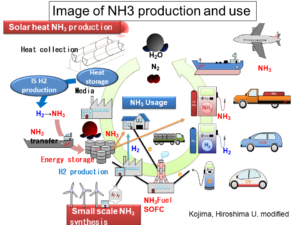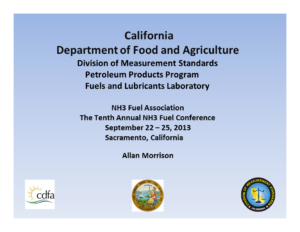Presentation
Electrochemical Ammonia Synthesis from Water and Nitrogen using Solid State Ion Conductors
Besides its current applications, ammonia (i.e. carbon-free fuel) could play important roles in preparing for oil depletion and coping with climate change since it releases only nitrogen and water when burned. Ammonia contains 17.6wt% of hydrogen and has significant advantages over hydrogen in storing and transporting energy. The current industrial ammonia production is based on the Haber-Bosch process, which has the drawbacks of high greenhouse gas emission, reaching up to 2.16 kg CO2/kg NH3 and large energy consumption over 30 GJ/ton NH3 resulting from the production of the reactants and the high pressure-high temperature synthesis of ammonia. In order to…








